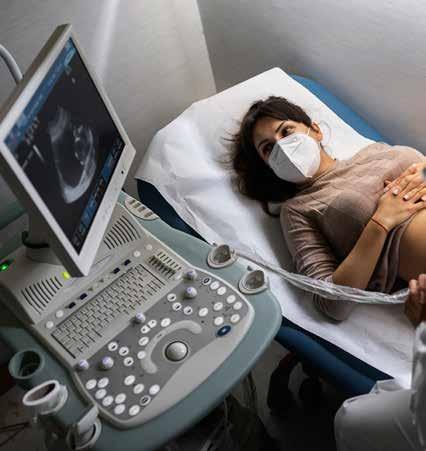
2 minute read
Maternal Mortality Reversing the Risk
Innovative solutions are needed to curb the high rate of pregnancy-related deaths—especially among women of color.
By Sarah Fister Gale
Approximately 700 women die each year because of pregnancy-related complications, according to the U.S. Department of Health and Human Services (HHS).
“Women in the U.S. are more likely to die in pregnancy, during childbirth and postpartum than in any other high-income country,” says Dr. Laurie Zephyrin, vice president for Advancing Health Equity at The Commonwealth Fund. The most common causes of death include infection, blood clots, severe postpartum bleeding, high blood pressure, stroke and cardiac conditions.
To confront this grim reality, payers and providers are rethinking how they can advance the quality of maternal health care before, during and after pregnancy. From educational tools to outreach programs and incentives, they’re successfully providing handson care to low-income women and women of color. Meanwhile, policymakers are examining ways to expand insurance coverage so that mothers have access to care long after childbirth.
The call to action is critical: about 60% of maternal deaths could have been prevented, according to the Center for Disesase Control and Prevention (CDC). Improving outcomes in maternal health requires increasing support and education for mothers during every step of their pregnancy and postpartum journey through programs deployed locally, statewide and nationally.
Identify Root Causes
Pregnancy-related death is associated with myriad failings in the health care system, including limited access to appropriate care, missed or delayed diagnoses, and lack of knowledge among patients and providers around warning signs, according to the CDC.

Women of color bear the brunt of these risks. Dr. Zephyrin notes that Black women are two to three times more likely to die in childbirth than others—a disparity that has been constant since the U.S. started collecting data on maternal mortality rates more than 100 years ago.

“Education is typically protective in health, but in this case it is not,” Dr. Zephyrin says. Black women with college degrees face a 60% higher risk of a maternal death than white or Hispanic women who didn’t graduate high school, according to The Commonwealth Fund.
The data is a stark reflection of entrenched racial inequities in the U.S. health care system and the general lack of investment in maternal health care, says Eugene Declercq, PhD, professor of community health sciences at Boston University School of Public Health. “The system is set up to care for the babies, not the mothers,” he says.
Establish Standards of Care
Historically, there have not been standard approaches in obstetric medicine to identify and respond to maternal health risks, says Christine Morton, PhD, a medical sociologist with the California Maternal Quality Care Collaborative (CMQCC). Each hospital would have its own methods for identifying and addressing potential health events, as would each physician. The lack of standard protocols meant that when a pregnancy-related complication occurred, neither hospitals nor physicians were ready to respond with timely and appropriate treatment, putting women at risk for severe morbidity or even death
To better respond to the top causes of preventable deaths among pregnant and postpartum women, CMQCC created a series of Maternal Quality Improvement Toolkits with funding from the California Department of Health. The toolkits provide a compendium of tools and best practices, care guidelines, hospital-level implementation guides and professional education slide sets. Each addresses different condi-


